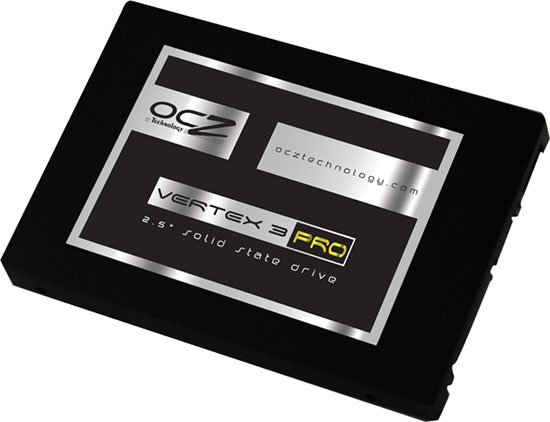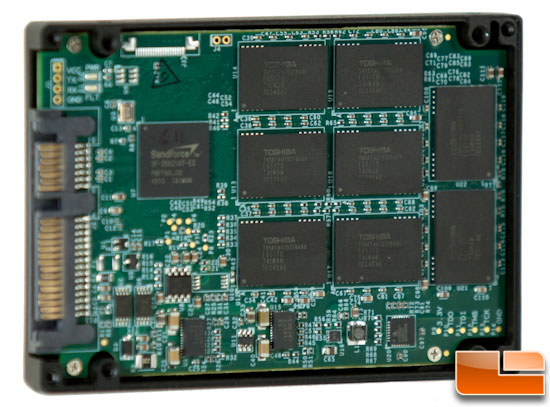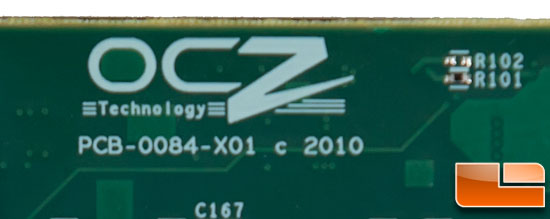OCZ Vertex 3 Pro SandForce SF-2582 200GB SSD Preview
Capacity, Final Thoughts & Conclusions
With 256GB total NAND on board the Vertex 3 Pro, roughly 22% has been set aside for over-provisioning which is more or less on par with what we saw with the first generation SandForce drives. Soon after, new drives were released with revised firmware that had less than 10% set aside. Overprovisioning is used to facilitate drive wear-leveling and to have good blocks set aside for any that reach the end of their life cycle so more is better in terms of longevity and performance stability.

All of this was really just a preview of what’s to come as this is not the final version of the drive and firmware tweaks are sure to be made before they hit the shelves. The Vertex 3 Pro is also the enterprise version of the drive although we’d expect to see similar performance from the consumer model. What we saw really left us salivating to get our hands on the final drives and perform a full suite of tests.

At speeds of 550MB/s & 500MB/s reads/writes, those that moved up
to a Sandy Bridge platform should strongly consider holding out for
these newer drives fueled by the SandForce SF-2600 series controllers. The costs shouldn’t be way beyond what the current
drives are priced at although retailers do tend to hike up prices for
new releases. As we’ve seen from the benchmarks, those on X58 platforms
using the Marvell controller won’t get the full performance or full value from
the drives. OCZ had proactively warned us that the Marvell controllers on the X58 boards yielded lower results due to the PCI-E Gen 2 x1 lane interface which creates a bottleneck. They weren’t kidding – we saw up to a 53% difference in scores on the same test on the different platforms. Yikes! A 1x link on PCI-E v2.0 will give you up to 500MB/s and the SATA III 6Gbps spec actually goes up to 600MB/s with a maximum theoretical bandwidth of 750MB/s (6Gbs = 6000Mbs/8 bits in a byte = 750MB/s) Those of you who went with SATA III 6Gbps capable Intel X58 motherboards that were done by Marvell solutions that are only connected by a single PCIe link are going to be unhappy about this and we can’t say we blame you but it’s not a drive issue so OCZ shouldn’t bear the brunt of your wrath. In fact, since they are the first out the door they are helping get the word out sooner than later. We’d like to thank OCZ for working closely with us during testing and answering the many questions we had in order to bring our readers the best information possible.

In the end, we think the Vertex 3 line will live up to the expectations their predecessors set by being a high performance, quality drive and OCZ did well to retain the moniker. OCZ does manufacture their own PCB which is an extra peace of mind knowing they didn’t source it to the lowest bidder as others may do. While we can’t spill the beans on exactly when the consumer drives will ship, we can say it is right around the corner so stay tuned for further announcements from SandForce and OCZ. In terms of the SandForce controllers, we’ve published before that the enterprise controllers are the SF-23xx, SF-25xx and SF-26xx series. The consumer models will be SF-21xx and SF-22xx in nomenclature. We expect similar performance from each set and while we can’t be specific, look for enhancements in security, NAND compatibility, reliability, and power management. We’ll bring you more details later this month!

Legit Bottom Line: While not the final product, the performance of the Vertex 3 Pro sample with the SandForce SF-2582 controller we received yielded outstanding results on the Sandy Bridge P67 platform. Those using SATA III (6Gbps) X58 boards should probably look to upgrading to the Sandy Bridge platform before investing in this emerging generation of controllers.

Comments are closed.